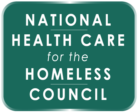Tobacco use is the single most preventable cause of morbidity and mortality in the United States (U.S. Department of Health and Human Services, 2014). Studies have consistently demonstrated that people who are homeless have high rates of tobacco use and high-risk smoking practices, including the misuse of tobacco products (Baggett & Rigotti, 2010; Torchalla, Strehlau, Okoli, Li, Schuetz, & Krausz, 2011). Smoking, in particular, is more prevalent in the homeless population (69-80%) than in the general U.S. adult population (17%) (Baggett & Rigotti, 2010; Centers for Disease Control & Prevention, 2015; Connor 2002, Tsai & Rosenheck, 2012). Out of the 890,283 patients served by the U.S. Health Care for the Homeless (HCH) health center program in 2015, 12% had a primary diagnosis of tobacco use disorder and 59% received smoking and tobacco use cessation counseling at their health center compared to 5% and 72% respectively in the general community health center population (Uniform Data System, 2015).
Nicotine Anonymous Peer Support Groups–Can They Work in Homeless Service Settings?
Categories:
Chronic Disease, Clinical Practice, Substance Use Disorder

